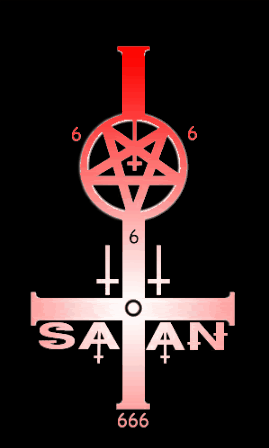
The details on the devil
Compared with the broader field of Neo-Pagan religion, in which it is sometimes and incorrectly subsumed, religious Satanism remains an under-researched and under-reported topic. More work has probably been done on the illusory “Satanists” conjured by ritual abuse accusers than on self-proclaimed and practicing Satanists, a deficiency that Jesper Aagaard Petersen is aiming to remedy with this anthology devoted to contemporary currents of religious Satanism. The book, which is principally sociological in orientation, is divided into three main sections: studies of “history, tradition, and legitimacy”; regional examinations, primarily of Northern and Eastern Europe Satanic subcultures; and a collection of emic Satanic documents. Along with practicing Satanists, the book’s contributors include practicing journalists, professional sociologists and anthropologists, and scholar-practitioners.
Setting the stage with a thorough introduction, Peterson establishes the important point that contemporary Satanism has largely divorced itself from the Christian context that once lent the Satanic current the bulk of its meanings and much of its frisson. For this reason, Satanism’s strictly oppositional characteristics need to be balanced with a more constructive and sociologically nuanced account of what Satanists think and do. Beyond the generally inchoate if forceful adolescent Satanism that Peterson dubs “Reactive,” he sees two main categories for this edgy but often high-minded cult of the individual: a Rationalist strain, established and typified by Anton LaVey, that emphasizes a realist and even skeptical Epicureanism; and an Esoteric strain, which more closely resembles other theistic and occult currents of esoteric initiation.
To characterize the particular religious orientation of Satanism, Peterson invokes a useful concept that Paul Heelas developed to explain the far different domain of the New Age: a “self-religion.” Both Satanists and New Agers are devoted to the psycho-spiritual realization of the self, although the Satanic self is a far more adversarial, individualistic, and self-gratifying beast. In the more esoteric strains, the Satanic self becomes mystically reified as well; as Asbjørn Dyrendal shows in his sharp discussion of the neo-Satanic Temple of Set later in the volume, the Setian path aims at the transformation of the practitioner into a solitary metaphysical monad. This Satanic individualism is one of the reasons that Peterson is keen to remind us, towards the close of his introduction, that Satanists, for all their rebellion, are in some ways quite at home in the contemporary world. Indeed, Satanic and neo-Satanic paths can be considered exemplary if unusual demonstrations of how religious forms positively engage an era defined by late capitalist ideology, widespread disenchantment, and the paradoxical drive to ground meaning and agency in a self that the Internet alone assures is increasingly flexible.
The volume opens with an essay by Graham Harvey that, building on observations he first made in a seminal 1995 essay on British Satanism, focuses on the practice of othering that simultaneously characterizes how Satanists position themselves in society and how they are constructed by outsiders, and especially by their sometimes hysterical accusers. The rest of the essays in the volume’s first section focus on the crucial legacy of LaVey, a trickster showman who stumbled into greatness. James R. Lewis looks at LaVey’s best-selling The Satanic Bible (1969), demonstrating how this rather hodge-podge and hastily constructed text continues to serve—rather ironically, given its purported opposition to religions of the Book—as an authoritative scripture, at once a continually relevant source of doctrine and an organizational tool in the contests of legitimization that followed the inevitable eclipse of LaVey’s charismatic command—a process of fragmentation, routinization, and institutional contests that Maxwell Davies ably delineates in his contribution to the volume. In what could be read as an example of how far LaVey’s “word” has spread, Kathleen Lowney beautifully describes her encounter with a group of mall-haunting teenage Satanists in a small town in the southern United States, though she unfortunately spends more time reflecting on the logistical, institutional, and social challenges she faced as an academic researching Satanism than on the attitudes or experiences of her subjects.
Much of the rest of the book is taken up with a series of regional portraits of contemporary Satanisms. Milda Alisauskiene and Ringo Ringvee look at Satanism in the post-Glasnost climates of, respectively, Lithuania and Estonia; though telling distinctly different tales, both overviews point to the secularizing dynamic at work within Satanism itself, and show how a tendency towards atheistic realism conflicts with the more feral Satanism of spray-can-wielding youth as well as popular images of lethal evil, both of which frustrate Satanist attempts to legitimize their discourse and identity. In his contribution, Rafal Smocynski shows how the phantasmic cohesiveness of Poland’s home-grown Satanic panics, which obsess over “a semi-supernatural monster that is driven only by its huge and unnatural appetite for pleasure” (p. 143), is ironically undermined by the diffuse and highly informal reality of Polish Satanism, at least as it is expressed online. In one of the most lively and entertaining pieces in the book, Didrik Søderlind and Asbjørn Dyrendal show how Scandinavian Satanism is embedded within particular contexts—including the paternalistic liberal presence of Lutheran state churches and the cultural dominance of Black Metal attitudes and aesthetics—which shape what they authors call its “glocal” expressions of an America-birthed subculture. These expressions include social democratic leanings that depart from American Satanism’s libertarian tendencies, as well as a surprising pair of pants worn by the leader of the Norwegian Satanic Society: not the black leather you might expect, but graffiti-covered blue jeans featuring a peace symbol and the cheeky slogan “Kiss my Ass.”
While Peterson makes a good claim for the relative elasticity of the term Satanism, there are problems with the term that become more apparent the farther the topic departs from LaVey’s legacy. Though the figure of Satan has been drastically recontextualized, his name and essential iconography still fundamentally imply an oppositional or even parasitic relationship to the broader Judeo-Christian tradition. But as the transgression of Christian norms loses its spunk, and as the broad course of Neo-paganism and contemporary ritual magic reframe occult practice within more eclectic, global and, increasingly, “shamanic” contexts, it is inevitable that the specifically Satanic current loses some nominal coherence. In this sense, the splitting off of Michael Aquino’s Temple of Set from LaVey’s Church of Satan in 1975 is paradigmatic, as Aquino replaced LaVey’s cocktail-sipping devil with a more sober and recondite Egyptian god. Should Setians still be called “Satanists”? If the answer is yes, aren’t scholars running the risk of shoe-horning darkside practitioners and metaphysicians into a homogenous framework that unintentionally parrots fundamentalist Christian exegetes for whom Odin, Kali, and Harry Potter are all masks of a single Dark Lord? If the answer is no, does the “Satanic milieu” that the contributors to this volume have done such a fine job of clarifying lose broader explanatory power?
In his crucial contribution, Maxwell Granholm argues that the term “Satanism” only gets you so far. Setians are, at best, “post-Satanic,” and even that term loses utility when it comes to describing individuals and groups who root their ominous rituals and starkly individualist cr
eeds outside the imaginal, historical, or specific doctrinal milieu of Satanism proper. Examples of such groups would include the eclectic Swedish initiatory order Dragon Rouge discussed by Granholm, or the British chaos magicians whose complex interweave with Satanism Dave Evans explores elsewhere in the volume. To characterize these formations without invoking Satanism, Granholm suggests the term “Left-Hand Path.” While that tag has its own baggage, Granholm makes a good case for its usefulness in dealing with paths that parallel Satanism in emphasizing self-deification, a hedonic or at least this-worldly orientation, and an antinomian stance.
While Granholm provides a helpful list of characteristics necessary to a Left-Hand orientation, one additional if tricky feature I would have liked to see included is the stylistic or affective dimension of the Satanic current—what one might call, with decadent echoes intended, l’atmosphere sinistre. Alongside the oppositional function of “evil” imagery, as well as the sociological mechanisms of style and identity formation, Left-Hand Paths including Satanism often feature an “aesthetic” attraction to states of fear, horror, sado-masochistic eros, egoic power, monstrosity, morbidity, and nihilistic despair—or at least at attraction to the complex and sometimes ironic relationship between such affects and various ritual strategies, cultural artifacts, and subcultural fashions. In general, Peterson’s volume plays scant attention to the cultural, psychological, or philosophical implications of this distinct and sometimes rather intense aesthetic diabolism, which is why Gry Mørk’s lively and well-informed essay on old-school Norwegian Black Metal is such an important contribution to this collection. With great sensitivity to the affective register of Black Metal, Mørk shows how, for a brief spell anyways, aesthetics, ethos, and metaphysical worldview fused into a paradigmatic (and sometimes violent) moment of Satanic sincerity—one whose grim ascesis features, paradoxically, an almost total inversion of LaVey’s call for hedonic enjoyment.
Peterson closes the volume with even more “authenticity:” a collection of five primary documents of religious Satanism. Neither LaVey nor Aquino is represented, which is unfortunate because the pieces by Vexen Crabtree, Tani Jansang, Nathan Wardinski, and Ole Wolf—while varied and substantive enough to provide a valuable range of insider perspectives—seem minor in context, and less informative in some ways than the sociological reports given earlier. The too-brief contribution by Stephen R. Flowers, on the other hand, provides a sober and intelligent near conclusion to the volume. Flowers—who joined the Church of Satan in the 1970s, served as Grand Master of the Temple of Set’s Order of the Shining Trapezohedron, and has become, under the pen name Edred Thorsson, one of the leading proponents of Germanic or Heathen mysticism—embodies the shift from Satanism toward a Left-Hand Path. In his piece, he develops the essential philosophical framework of Setian philosophy: the spiritual intensification of the isolate individual’s subjectivity within a disenchanted material cosmos—a dark gnosis that, with no explicit lines of influence either way, bears more than a slight resemblance to the contemporary philosopher Ray Brassier and others devoted to an increasingly influential speculative realism.
Such a curious resonance is only one indication of the sometimes surprising manner with which religious Satanism engages the conditions of modernity. I would have liked more philosophical and symbolic analyses alongside the volume’s largely sociological engagements, and I think much more can be made about the differences between the hedonistic and essentially secular current of LaVey and the mystical claims and strategies of occult Satanists and Left-Hand Path adherents (I suspect, in fact, that the left-hand practitioners of what Petersen calls the Esoteric strain have largely rejected the “Satanist” moniker at this point, in part because of its associations with LaVey). In addition, the absence of any texts from LaVey or Aquino prevents the volume from being the perfect reader. Nonetheless, Contemporary Religious Satanism will certainly help define the Satanic current as a dynamic individualist interweave of darkside occultism and skeptical atheism. It will be of great interest to scholars of contemporary magic, new religious movements, Neo-Paganism, and all those interested in religious constructions that both embrace and resist the conundrums of a modernity in twilight.




